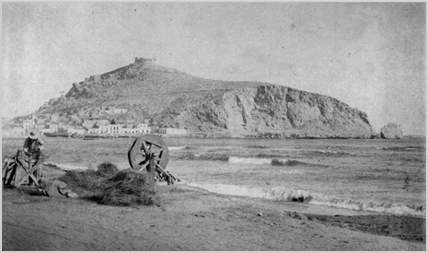 
The regenerate of the contemporary Spanish mining began in Almería in 1820 with the lead explotaition in the Sierra de Gádor, straight in 1840 of the Sierra Almagrera.
After constructing the new Aguilas port, the economic inability of the "Compagnie d’Aguilas" to execute the works of the railway from Sierra Almagrera to Águilas announced the crisis of the French hegemony and the lead operation and the arrival of the English capital and the emergin of the iron ore working.
Esparto had also been a source of almost inexhaustible source of wealth in the South and Southern Spain since time inmemorial. The harvest and manufacturing of esparto grass is the economic base of all the Spanish Southeast provinces between 1752 and 1857, although the economic boom would not happen until 1862. In England, the introduction of the steam engine in the printing and the reduction of the taxes to publications, led the liberalisation of the market of the paper made from Esparto grass fiber.
This way Aguilas became since 1870 in one of the most important places of esparto grass storage and trade around the Mediterranean. Firstly because Aguilas, as well as being an important and immediate port of esparto shipment, it also was to receive esparto items from Algeria. And secondly because Aguilas offered along its coastline a lot of closed shallow coves, which met ideal conditions for the installation of esparto fermenting pools called cocederos.
British companies were the first to become the monopoly of minerals and esparto exportation, so they chose Aguilas as terminal station of the railway projected between Granada and Murcia and as a complement to this line it would be the Hornillo pier.
(Coming soon).
|

